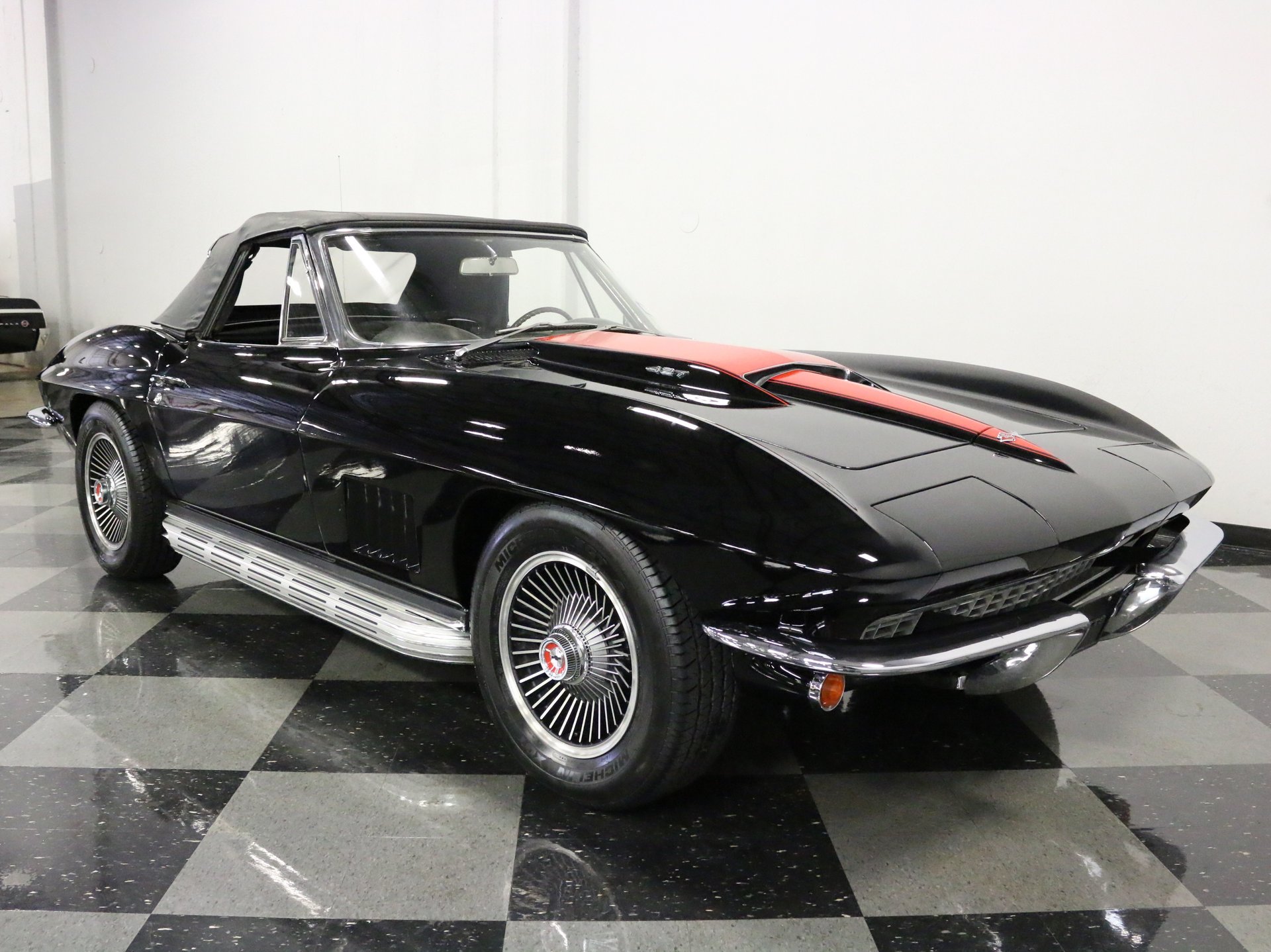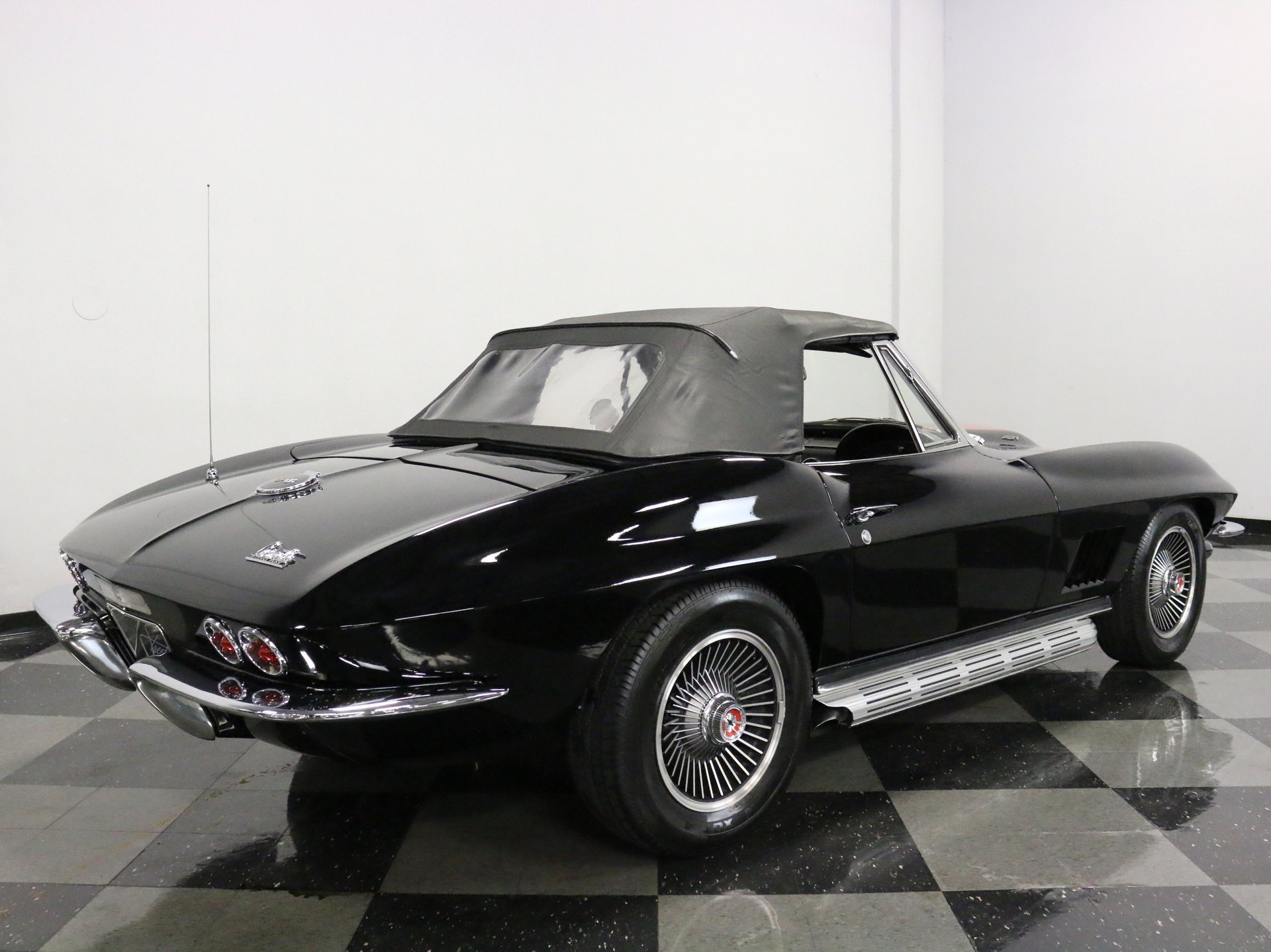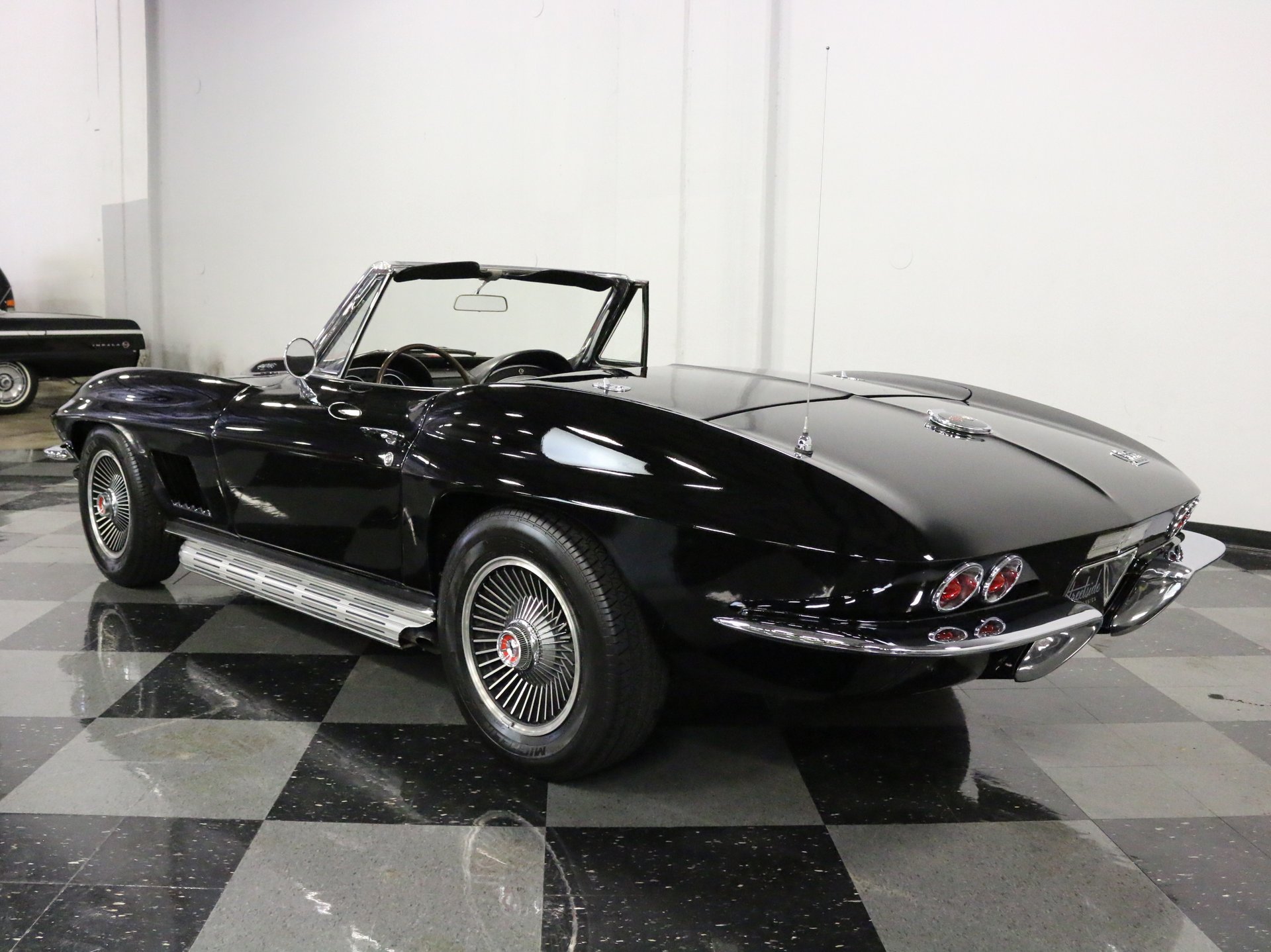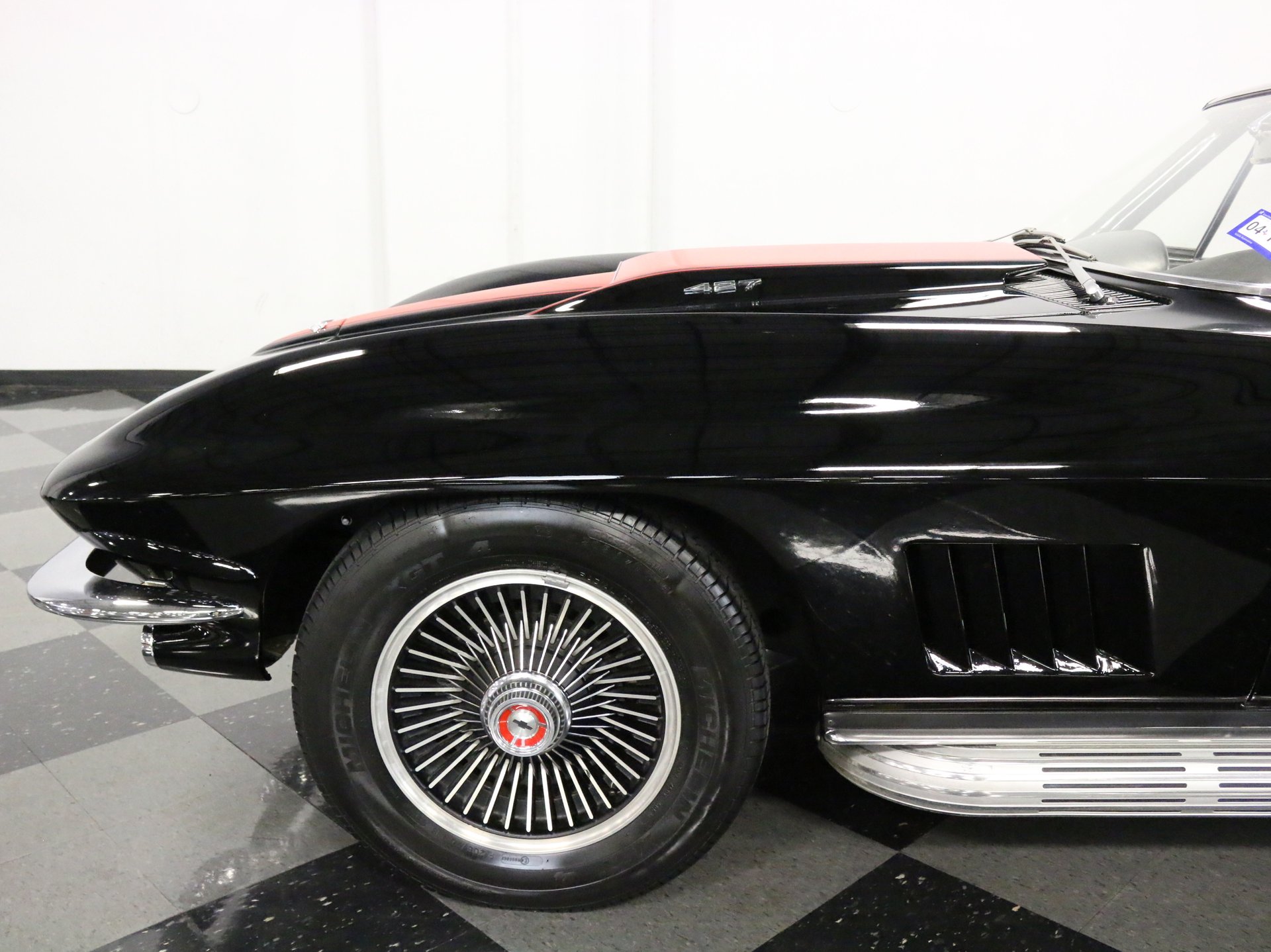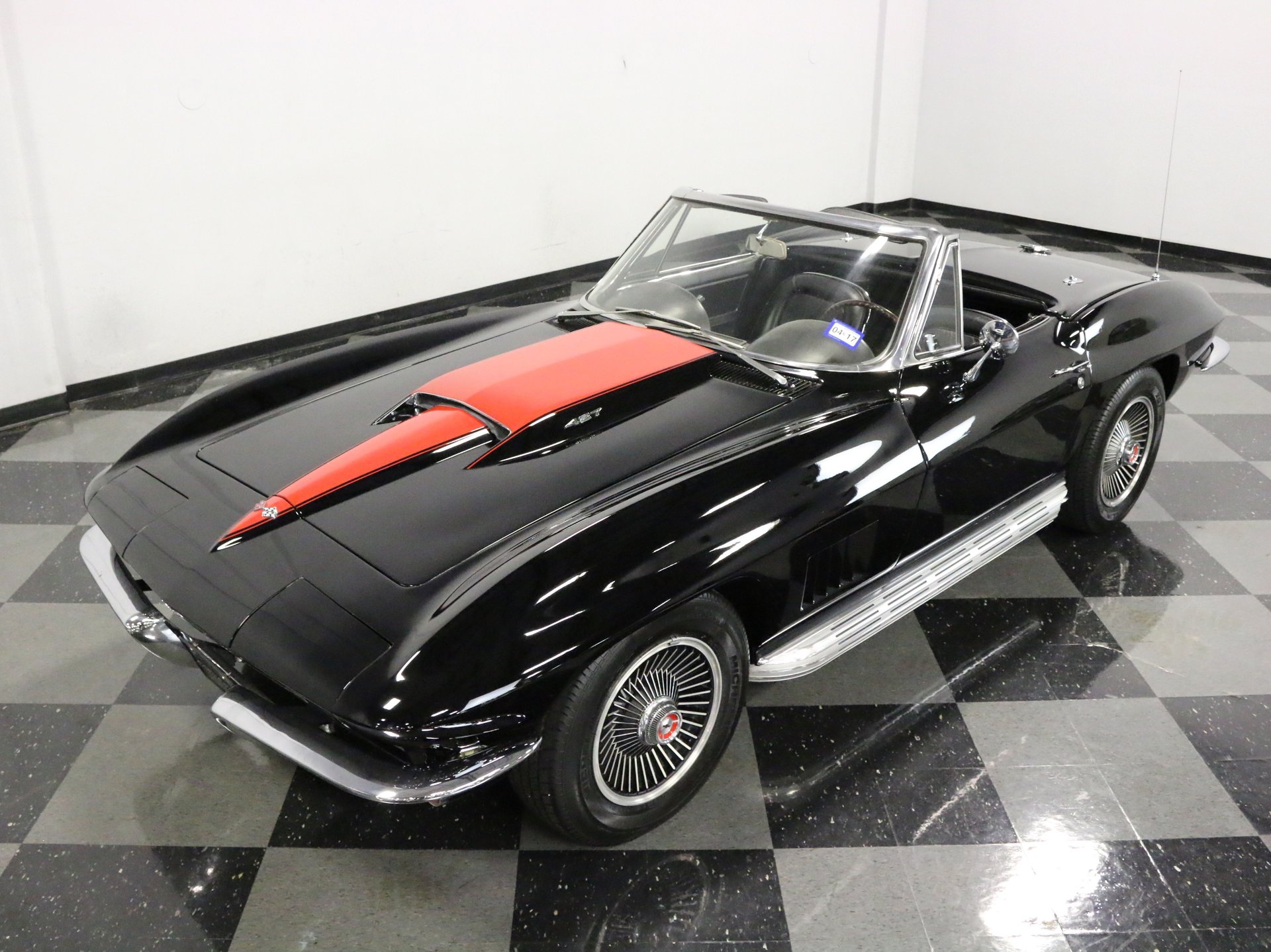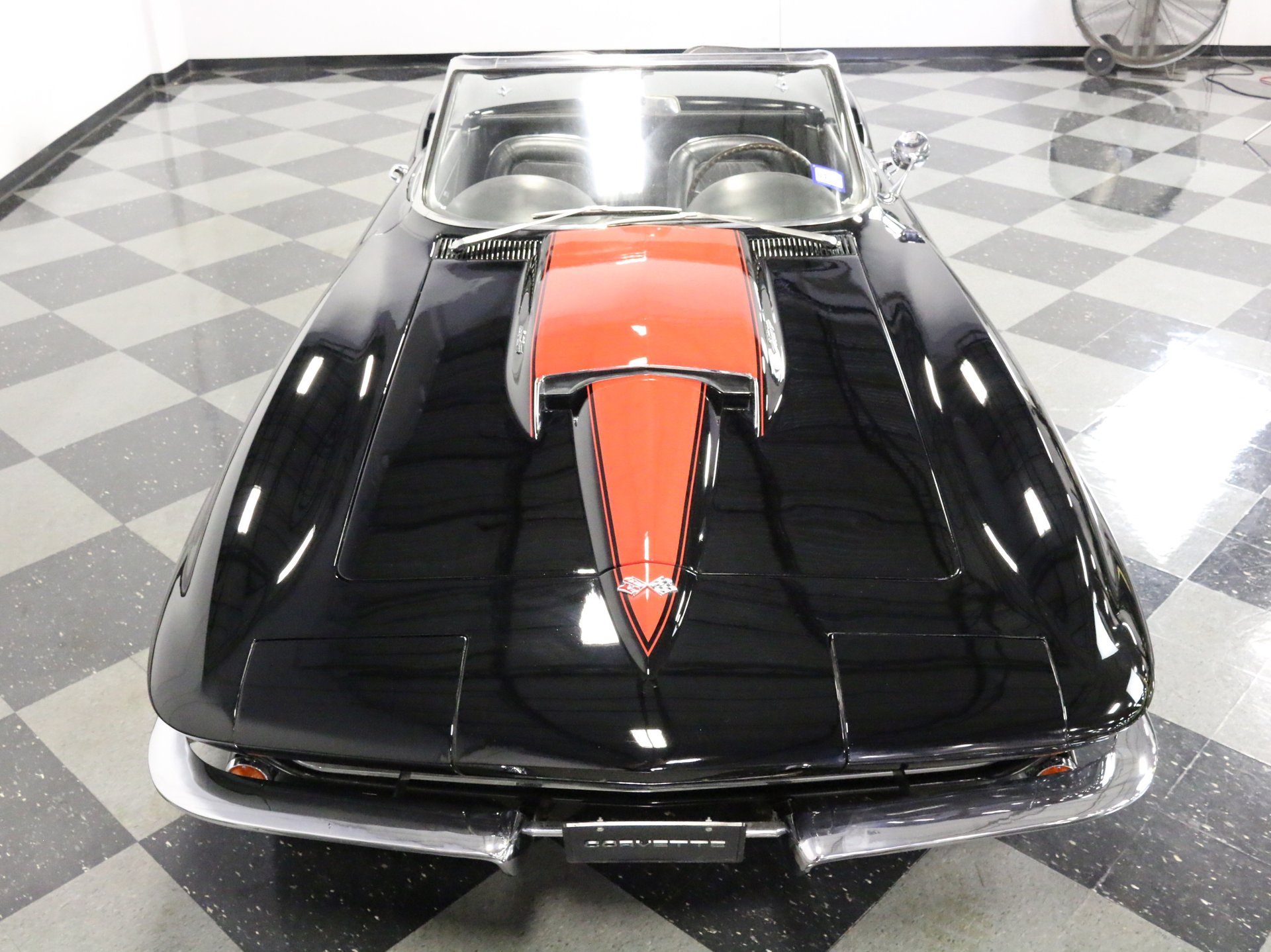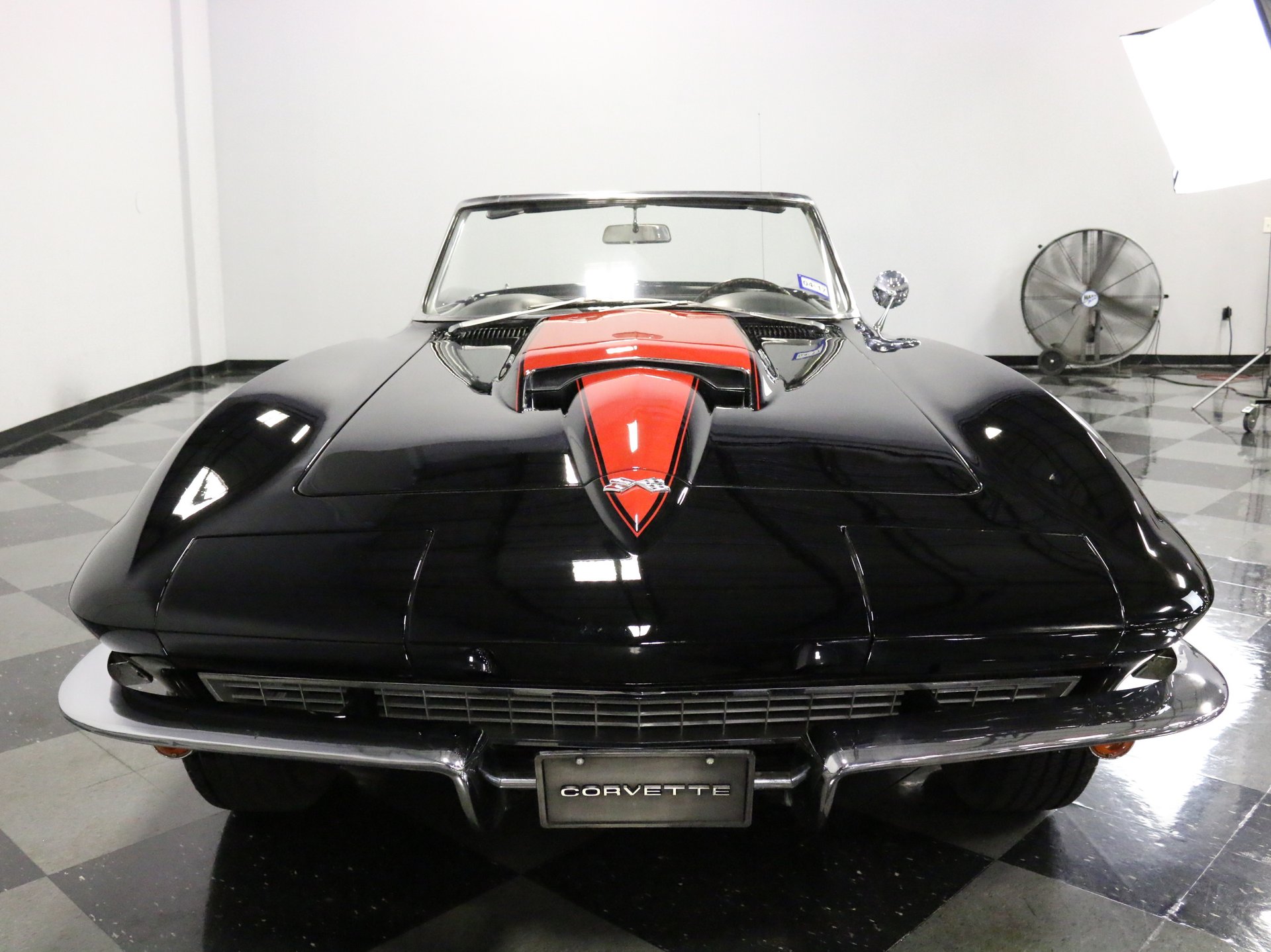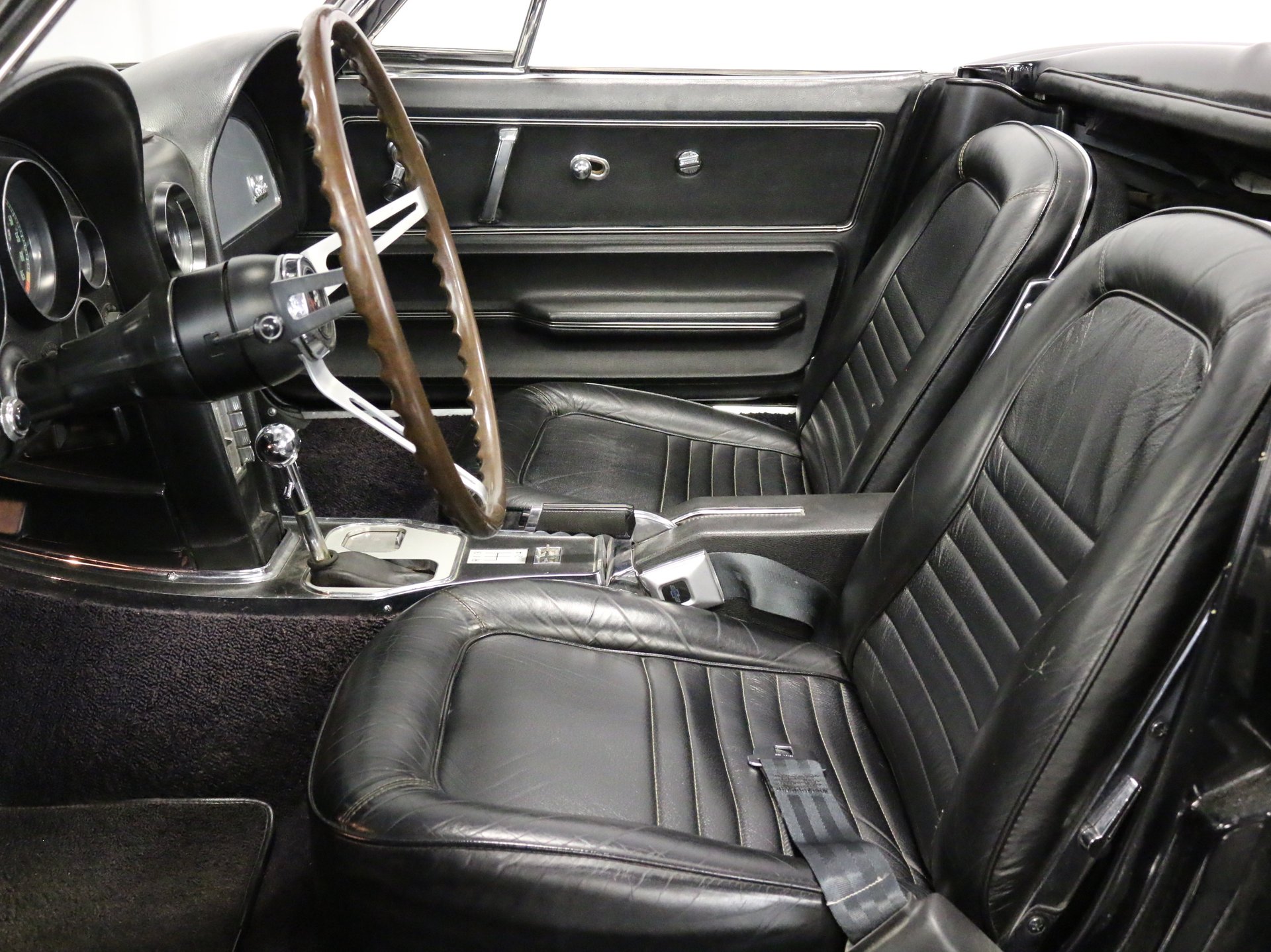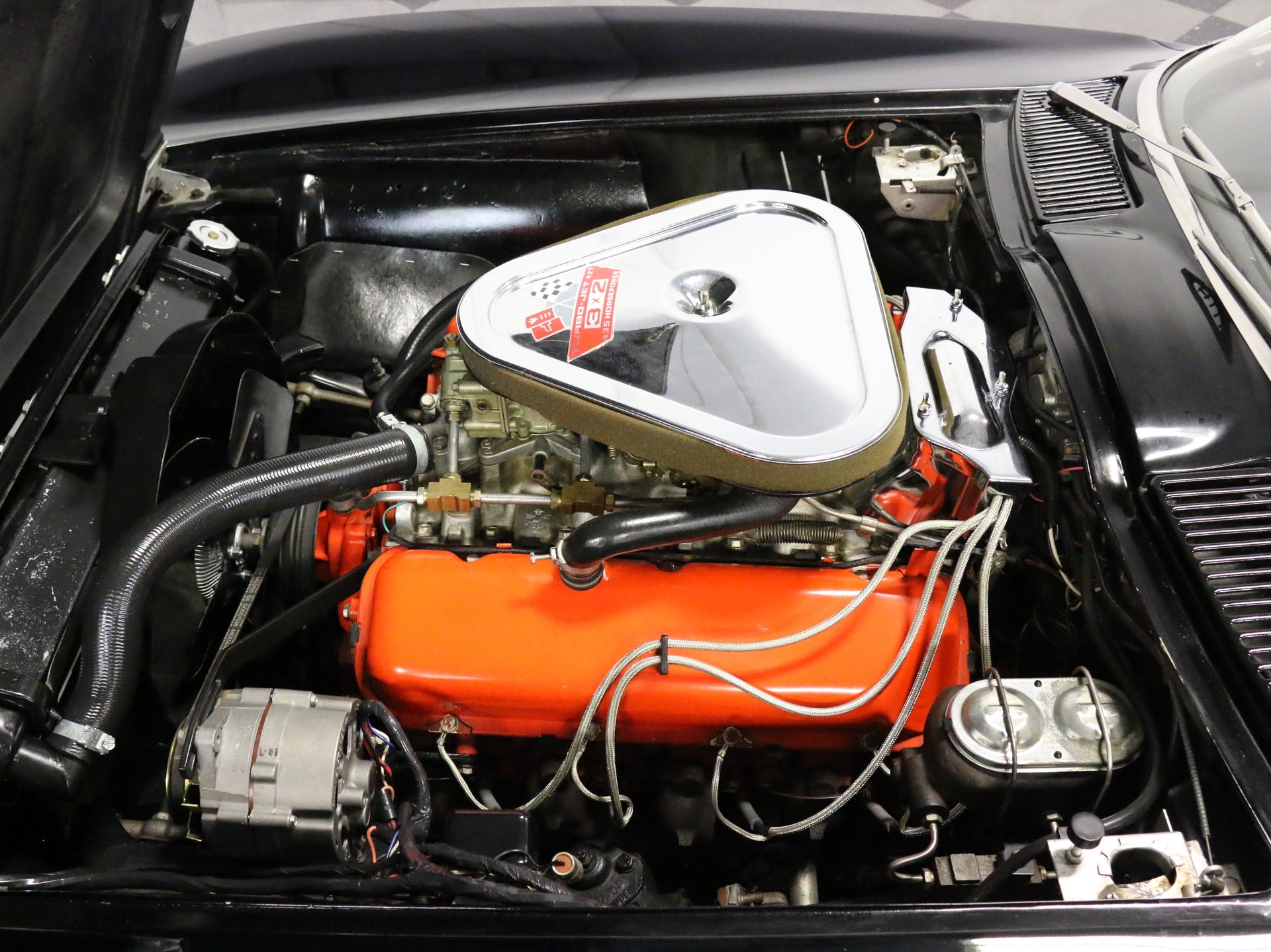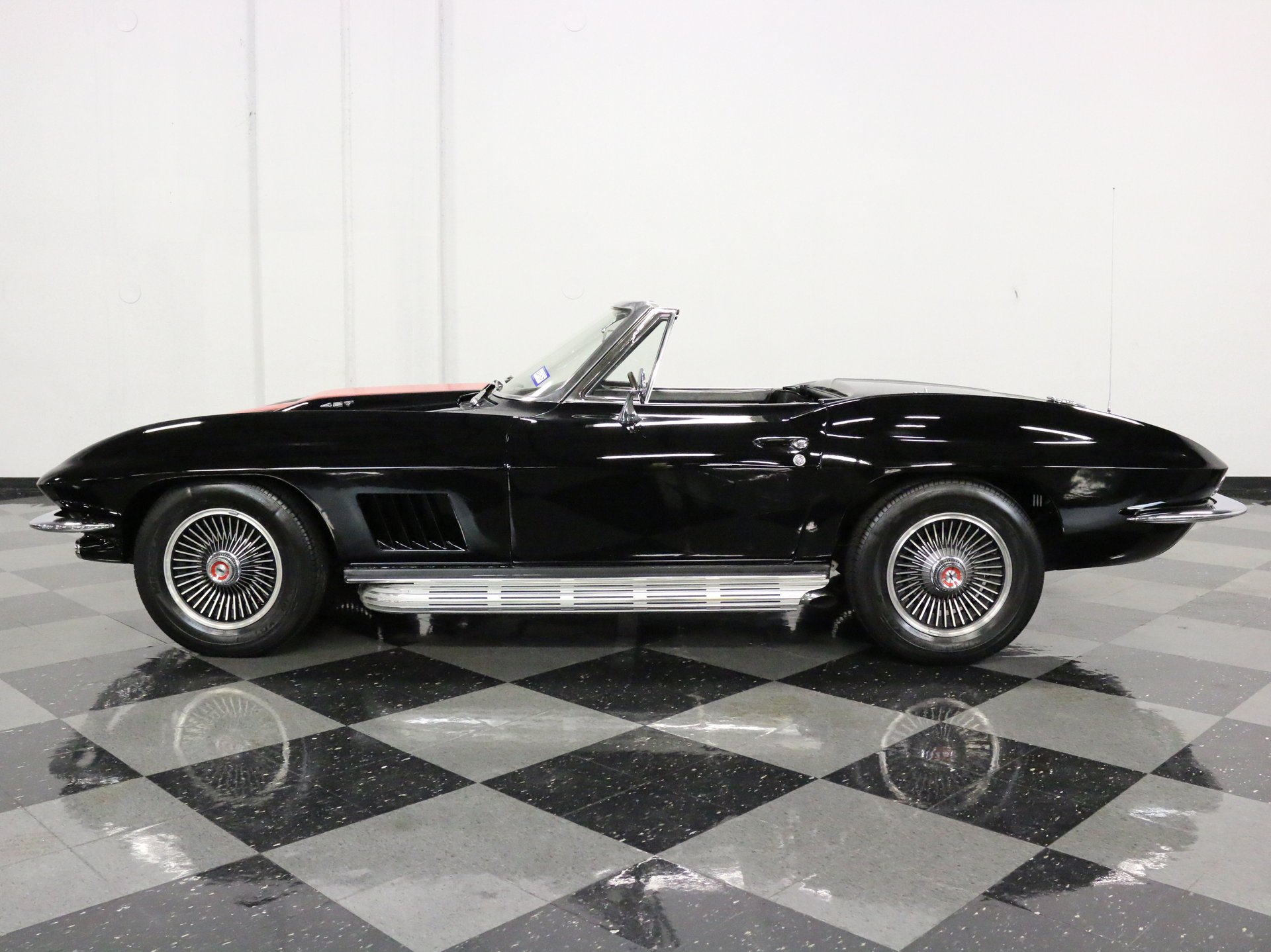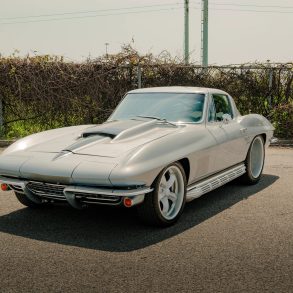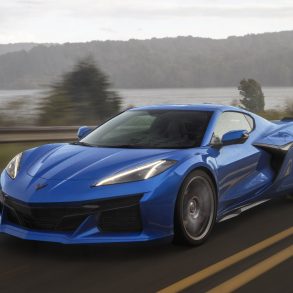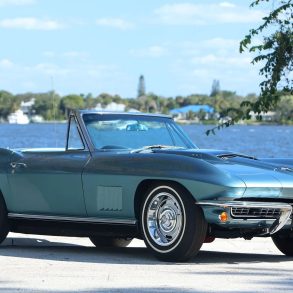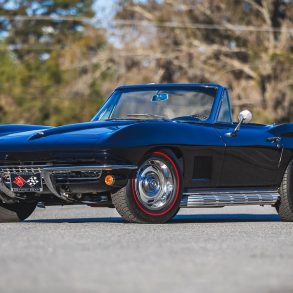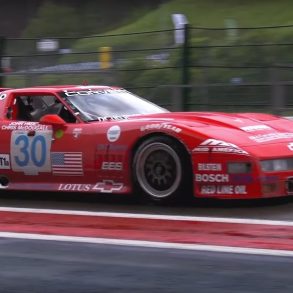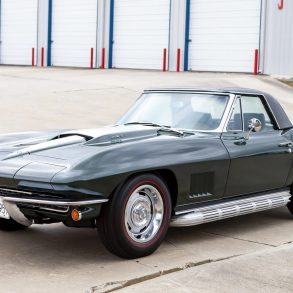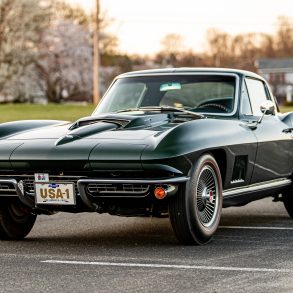1967 Chevrolet Corvette Sting Ray L71 (427/435HP)
The L71 was Chevrolet’s most powerful engine in 1967 which replaced the big-block L71 from the previous year. Using it’s famous ‘Tri Power’ intake manifold was rated by the factory at 435 bhp. Costing $437.10, 3,754 Corvettes were made with the L71 options and they could not come with automatic transmissions nor air conditioning. The L71 427 with three Holley 2-barrel carburetors is a legend. Ignoring the gentleman’s agreement to limit horsepower ratings to 425, Chevy zoomed past the rest of the industry with this motor, which is likely under-rated.
The base 300-hp 327 engine carried over from the 1966 Corvette model year. So did the L79 350-hp small-block option. But the big news were the 427 monster engines on the option list. The 390-hp L36, with its mild cam, single Holley 4-barrel carb and lower compression, was a carryover from 1966, and was designed for easy cruising. Next came the new 400-hp L68, essentially an L36 with the addition of the new 3×2 barrel tri-carb setup. Like the L36, the L68 could be had with automatic transmission and air conditioning. But the press fell all over themselves about the new L71 435-hp engine. This replaced the 1966 L72 427 as the top street engine in the lineup. High compression, wild cam, and the tri-carb ensured legendary performance. GM’s concern for reliability meant that automatic transmissions and air conditioning were not available on the L71. At $437.10, the L71 package was expensive, yet 3,754 (16% of Corvette production that year) were ordered.
It really started in 1965 when the L79 396 (425 horsepower and 415 lb-ft of torque) became available and the Corvette turned into a real beast. In 1966, the 396 grew into a 427, still (under)rated at 425 horsepower but torque was up to 460 lb-ft. And finally, in 1967 the street L71 427 maxed out with the 435 horsepower and 460 lb-ft of torque. The 1967 Corvette is unique because it is the only C2 with the forward-slanting side vents, stinger big-block hood, backup lights in between the taillights and five-slot steel wheels with beauty rings and caps.
Let’s dig into the 1967 big-block options and pricing. The $200 L36 427/390 with hydraulic lifters and one four-barrel carburetor, the $305 L68 427/400 with hydraulic lifters and 3×2 carbs, and lastly, the $437 L71 427/435 with solid lifters and 3×2 carbs. If you wanted aluminum heads, RPO L89 was another $368. And if racing was your desire, the L88 427/430 option cost $947. Mandatory with the L88 was the M22 heavy-duty, close-ratio four-speed transmission. The L88 also included a racing suspension and brakes, and was not for street use.
The big-block chassis was beefed-up with stronger front springs, a larger 0.875-inch front sway bar and a new 0.625-inch rear sway bar. For street performance, this was more than adequate. But on the racetrack, with wider wheels and tires, things started to stress out. The remedy was a full Logghe Stamping tube frame welded to the stock frame. Massive power and torque combined with wide racing tires was twisting the 1960-1961 designed structure. Power had out-matched the C2-C3 structure.
The L71 was an evolution of the L72, which produced a claimed 425 horsepower (SAE gross). The L71 replaced the single Holley 4-barrel of the L72 with three Holley 2-barrel carburetors, similar to what Pontiac had offered since the early 1960s. With the tri-carb arrangement, only the center carburetor was functional during normal driving. But stomp the accelerator and the vacuum-activated outer carbs delivered a torrent of fuel to the hungry big block. Chevrolet rated the L71 at 435 hp, but many thought the rating of the L72 was conservative (in fact there is data to suggest the L72 the faster of the two). What the L71’s tri-carbs did deliver was better fuel economy in daily driving, since it was essentially a 2-barrel engine until the need for speed hit. Since the only automatic transmission available to Chevrolet in ’67 was the aging 2-speed Powerglide, the L71 was only available with the superb M21 Muncie 4-speed manual, making this an engine for serious drivers.
Two other little-known options were available. RPO L89 added aluminum heads to the L71. No increase in horsepower, but a reduction of 200 lbs over the front wheels gave the L89 about the same weight bias as the 327 engine. Adding $368.68 to the L71 drove the cost of the L89 Corvette over the $5,000 mark, but it was the ultimate in street performance that year. Just 16 were built in 1967, making the L89 the rarest option.
Since the Chevrolet Studio was busy with the next generation car, styling changes to the ’67 were minimal. A new hood for the 427 cars was developed, with a “power bulge” that anticipated the ’68 design. Federal mandate eliminated knockoff hubs, so the factory alloy wheels were modified with a large hex nut. Other trim was cleaned up, and new side vents added to the front fenders, an easy task with the Corvette’s fiberglass construction.
The L71 427 with three Holley 2-barrel carburetors and 435 horsepower is a legend. Ignoring the gentleman’s agreement to limit horsepower ratings to 425, Chevy zoomed past the rest of the industry with this motor, which is likely under-rated. In 1967, Motor Trend tested a 1967 L71 427/435 Corvette. The Corvette with 3.55 gears ran 0-60 in 5.5 seconds, the quarter-mile in 13.8 seconds at 104 mph and had a top speed of 143 mph. Fuel mileage was 9-12 mpg. Shorter gears and a hot tune would have had the Corvette into the high 12s.


